Once destined to become the largest mansion in Canada, this colossal home has languished in a state of decay over the years. Through images captured by urban explorer Freaktogrophy, we dive into the captivating history of this abandoned edifice, known as the Peter Grant Mansion, which was originally intended to be a luxurious marvel featuring a waterfall, a small golf course, two swimming pools, an indoor boat garage, a squash court, and even an observation lighthouse. However, today, all that remains is an empty shell left exposed to the elements. Join us for a glimpse inside this extravagant mansion that was never completed.
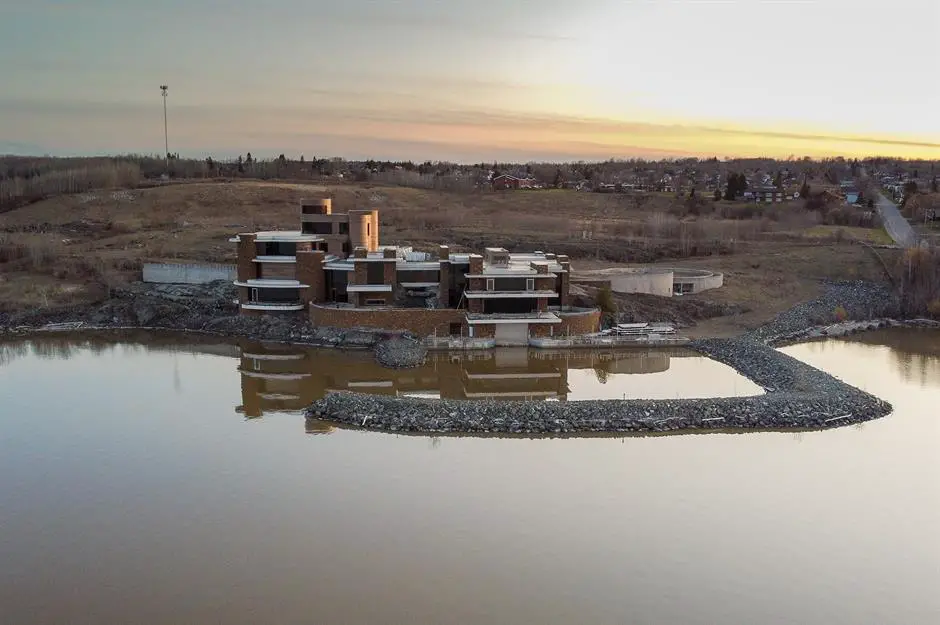
The story begins with Peter Grant, the millionaire owner of Grant Forest Products Corporation, who embarked on the construction of his dream home as far back as 2005. Having amassed his wealth in the wood industry by establishing his company in 1980, it quickly rose to become North America’s third-largest supplier of oriented strand board. Grant acquired a 43-acre parcel of land on the picturesque shores of Lake Temiskaming in Northern Ontario for CAD$110,000 ($88k/£65k) and had grand plans to build a custom mansion of colossal proportions.
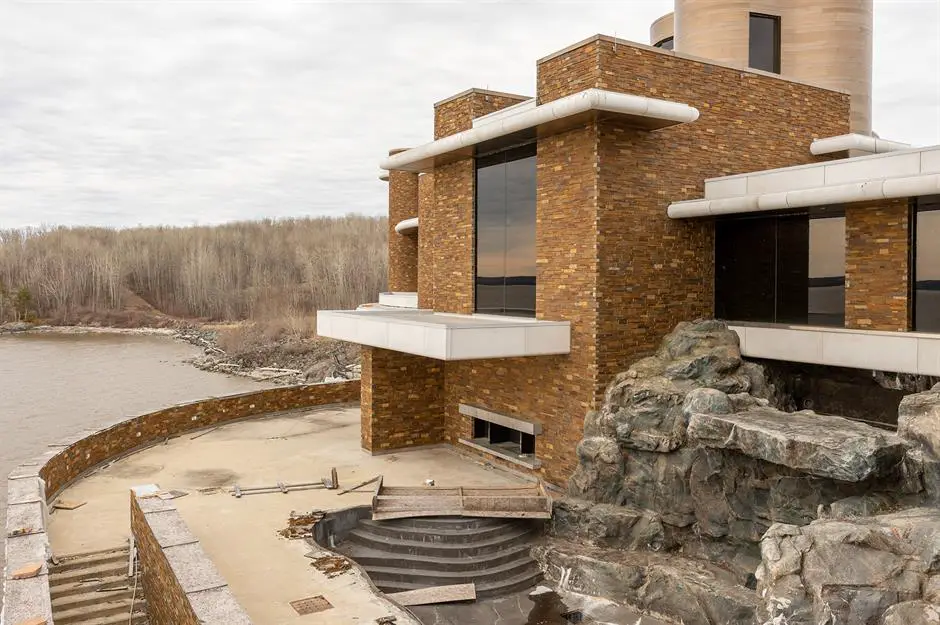
Yet, even as Peter Grant’s dream mansion neared completion, construction ground to a halt in 2008. The global economic recession had dealt a severe financial blow to him, and in 2009, after filing for court protection from creditors with an approximate debt of CAD$600 million ($479m/£353m), all of the company’s assets, including the mansion, were put up for sale.
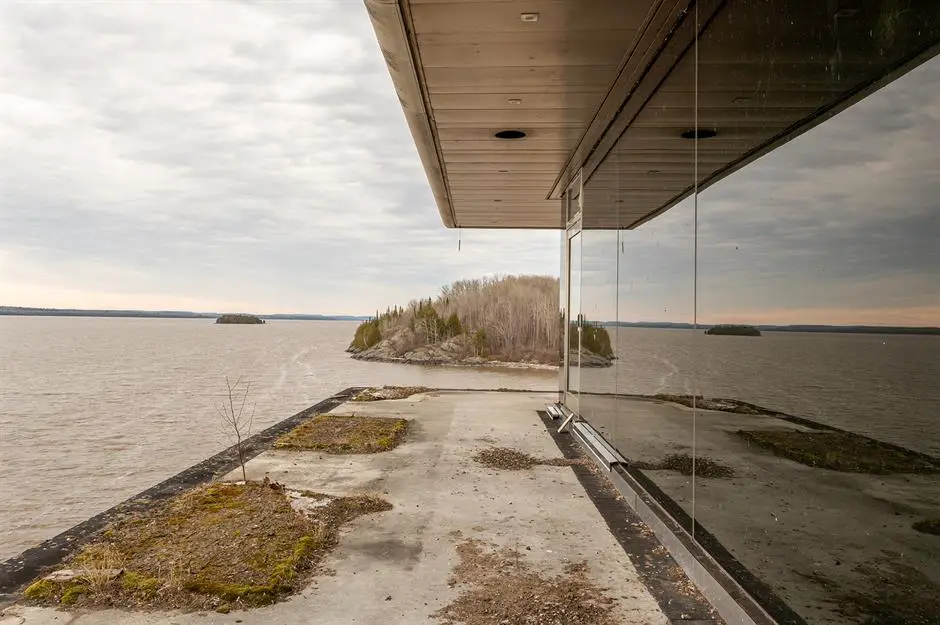
By the time construction came to a halt, the project was so advanced that most of the exterior had been finished, leaving behind the imposing shell of the structure. Grant had envisioned the building as both his personal residence and a corporate office. After his company’s downfall in 2009, the property remained dormant until it was listed for sale in 2010 for CAD$25 million ($20m/£15m).
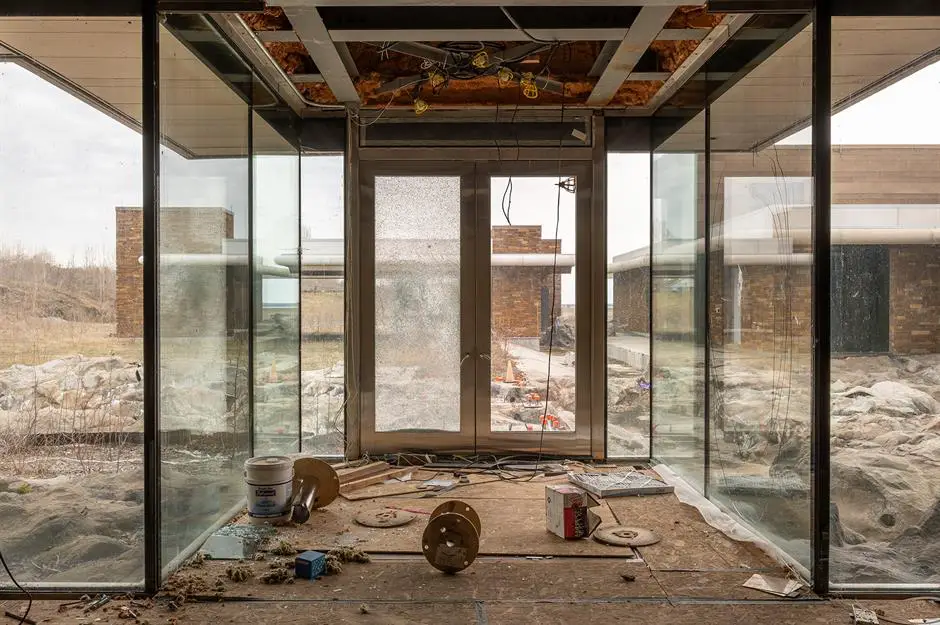
At the pinnacle of his career, Grant ranked as Canada’s 87th wealthiest individual, with a net worth of CAD$381 million ($304m/£224m) in 2004. However, within a few short years of his financial downfall, the remnants of his would-be mansion were acquired by an undisclosed Toronto-based company. There remained hope that the mansion might finally be completed as originally intended.
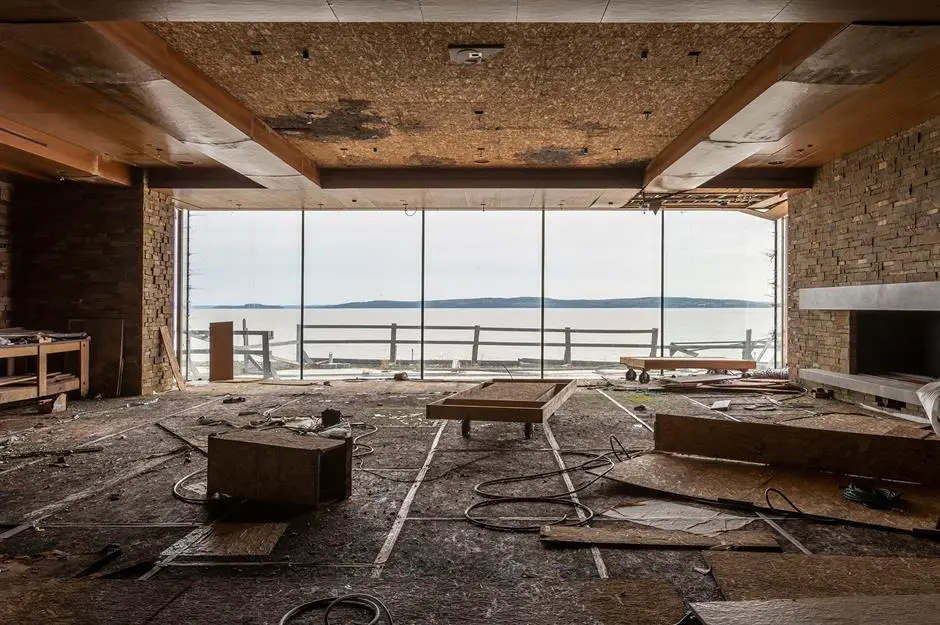
Nevertheless, the estimated cost of finishing the mansion and making it habitable was a staggering CAD$1 million ($800k/£589k). The company that had purchased the property purportedly failed to pay property taxes for three consecutive years, prompting the town of Haileybury to prepare to put the proposed Peter Grant Mansion on the market. However, in the eleventh hour before the sale, the enigmatic Toronto company settled their debts, and it is believed they continue to own the property to this day.

Recommended: The Rise and Fall of Bamboo Palace: A Dictator’s Tale of Opulence and Ruin
Today, the infamous Peter Grant Mansion remains a solitary realm inhabited only by security cameras positioned around the grounds and the primary building. As seen from these images, the property has fallen into a state of disrepair, rendering it uninhabitable.
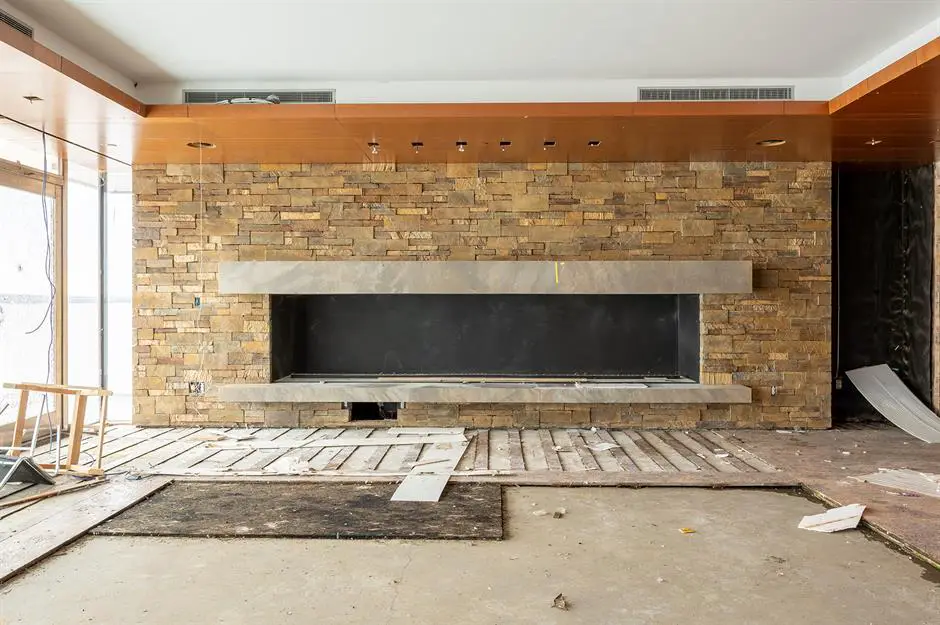
Rather than exuding the warmth of a home, the mansion currently emanates an industrial ambiance, undoubtedly the consequence of being abandoned for over a decade. The building is saturated with untapped potential, burdened by the unfulfilled promise of what it could have been. For instance, what was once intended to be a magnificent feature fireplace, surrounded by a brick wall, now stands empty in this living area, longing for a new owner to restore its purpose.
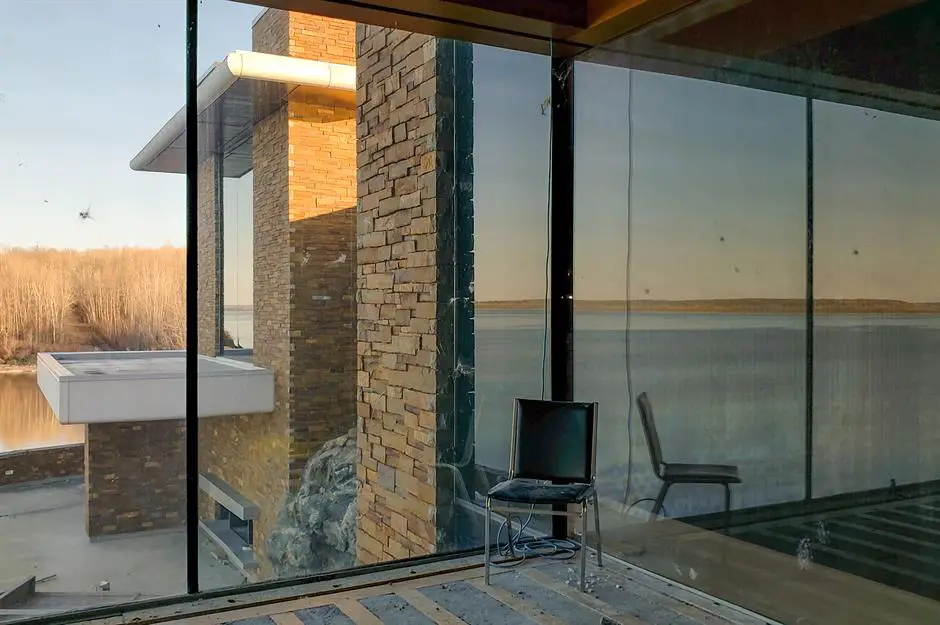
A considerable portion of the building’s glass exterior has suffered damage at the hands of vandals, yet there are pockets where it remains untouched. However, in a room that should have been adorned with opulent furniture, all that remains today is a single discarded chair.

As you venture deeper into the expansive residence, you encounter multiple winding corridors leading to numerous vast rooms adorned with floor-to-ceiling windows. This particular curvilinear corridor has fallen victim to graffiti from trespassing vandals who breached the confines of the long-abandoned mansion.
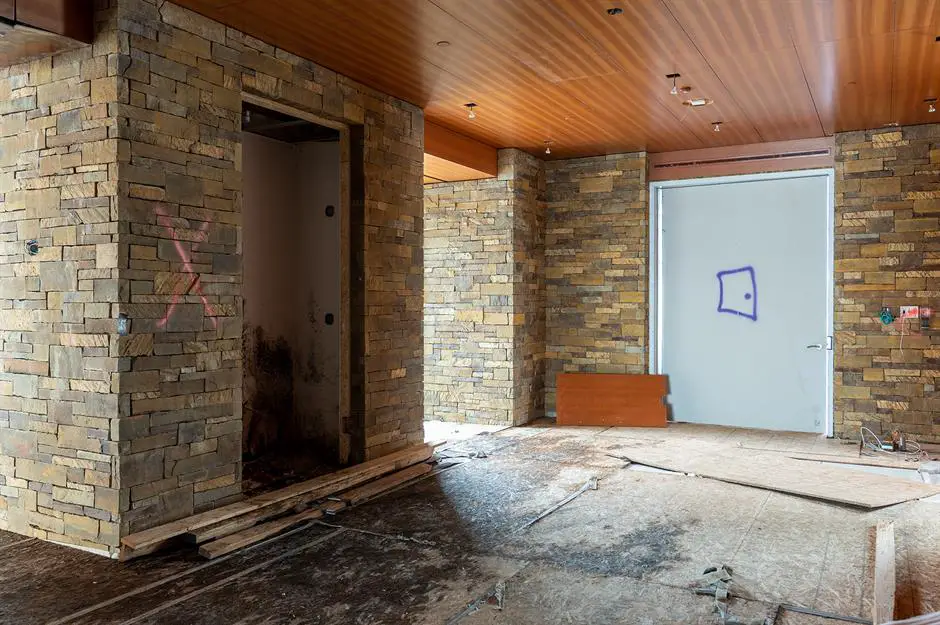
Given reports suggesting that the property spans a sprawling 65,000 square feet, it doesn’t require much imagination to envision the incredible potential this mansion held if it had been completed. While the statement stone walls stand complete, this particular corner remains without flooring, displaying signs of dampness on the floor.
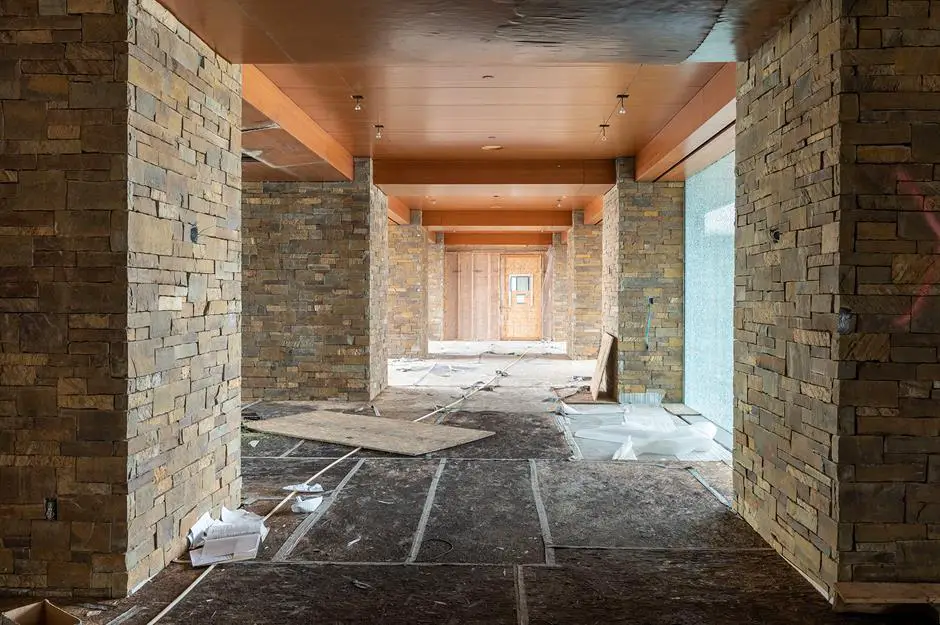
As is evident throughout most of the house, the floors in this lengthy corridor remain incomplete, with exposed plywood, unfinished electrical wiring, and many walls in need of final touches. Nonetheless, it’s not difficult to envision how this stylish brick wall could have served as a striking focal point in the residence.
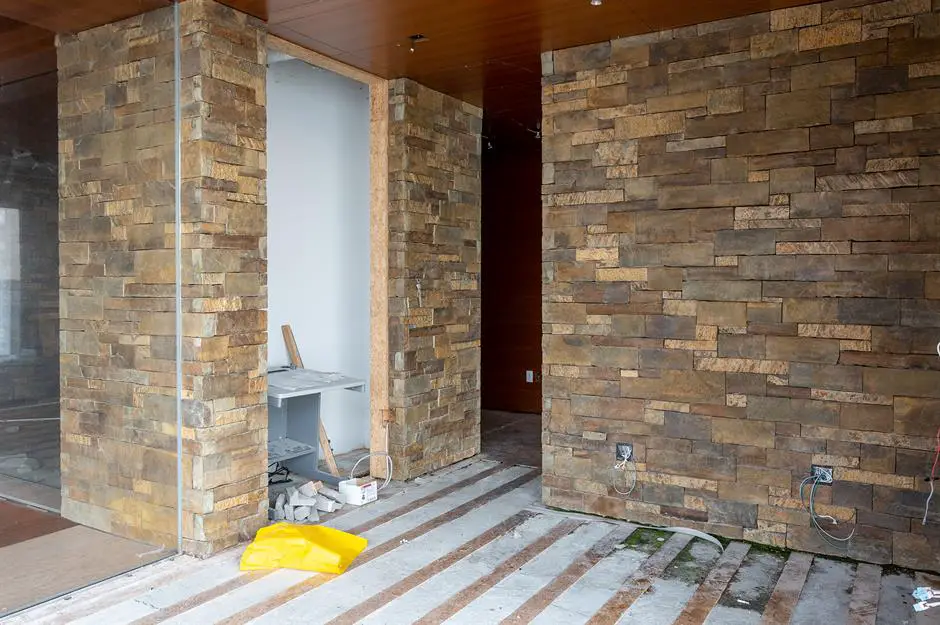
Recommended: Abandoned ‘Haunted’ Scots Mansion Which Belonged to Led Zeppelin Guitarist To Open To The Public
At each turn, you’ll encounter equipment left behind from the time when the mansion was still under construction. This small empty alcove, which had the potential for various uses, is now relegated to serving as a storage area for old materials.
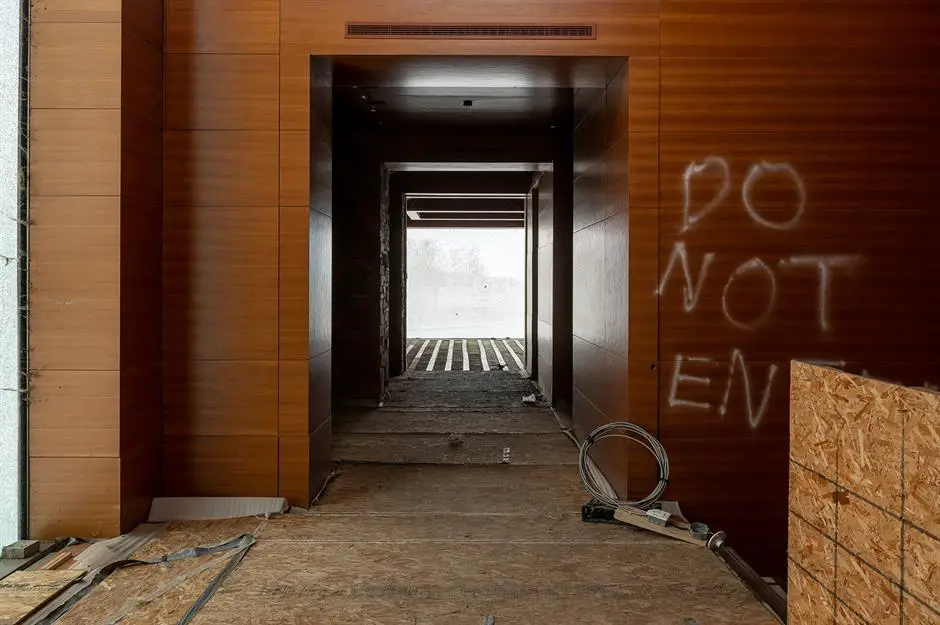
As you venture deeper into the mansion, an air of foreboding is set by a warning message, “Do not enter,” posted alongside the entrance to this corridor. Whether this message was left by the long-gone construction crew or by vandals who have since roamed the property remains a mystery. Nevertheless, it’s hard to imagine braving a walk further along the wooden corridor, no matter how luxurious it may have once appeared!
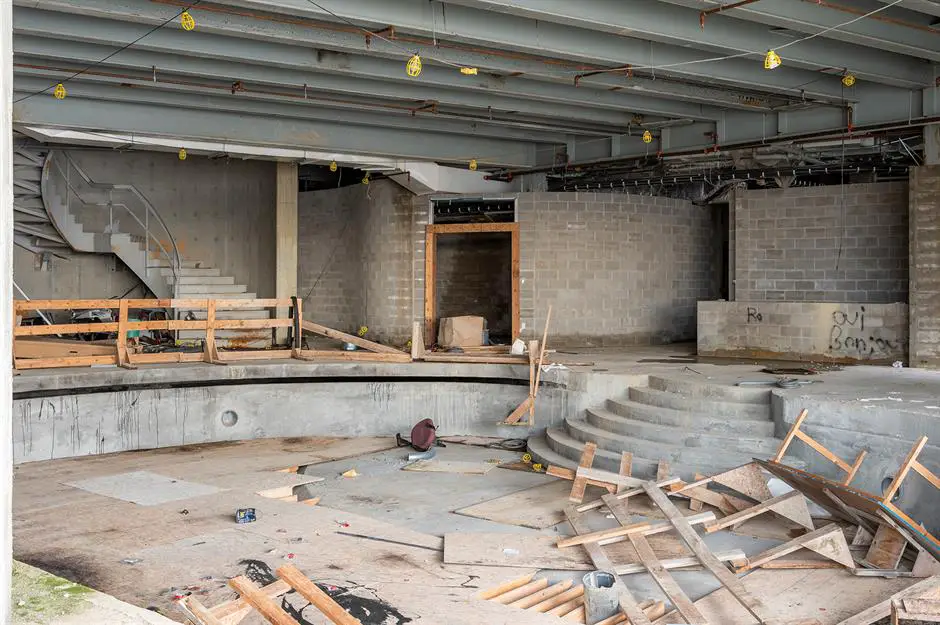
The swimming pool, hidden within the depths of the incomplete mansion, is a stark contrast to its original vision. Instead of being filled with pristine turquoise waters, as Peter had planned, it now lies cluttered with debris and discarded wood remnants left behind when construction came to an abrupt halt. Peter’s vision for the building encompassed both a home and a workplace, and this pool could have been the perfect sanctuary for unwinding after a demanding day’s work.
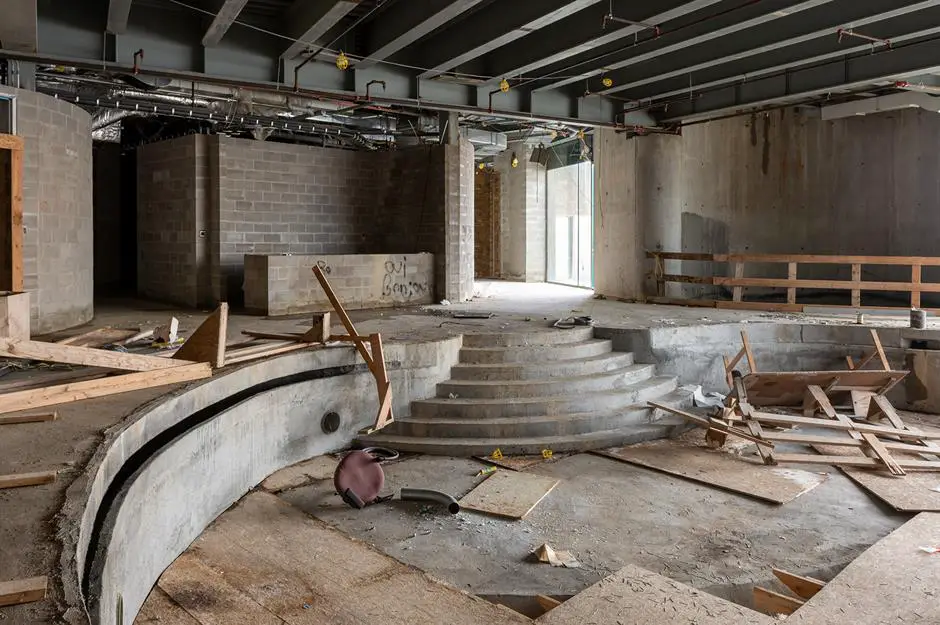
Among the two indoor swimming pools in the mansion, it’s easy to envision the opulence that the completed room might have exuded. A small, gracefully curved set of stairs would have led to the shallow end of the pool, while windows would have provided serene views of the picturesque lake.
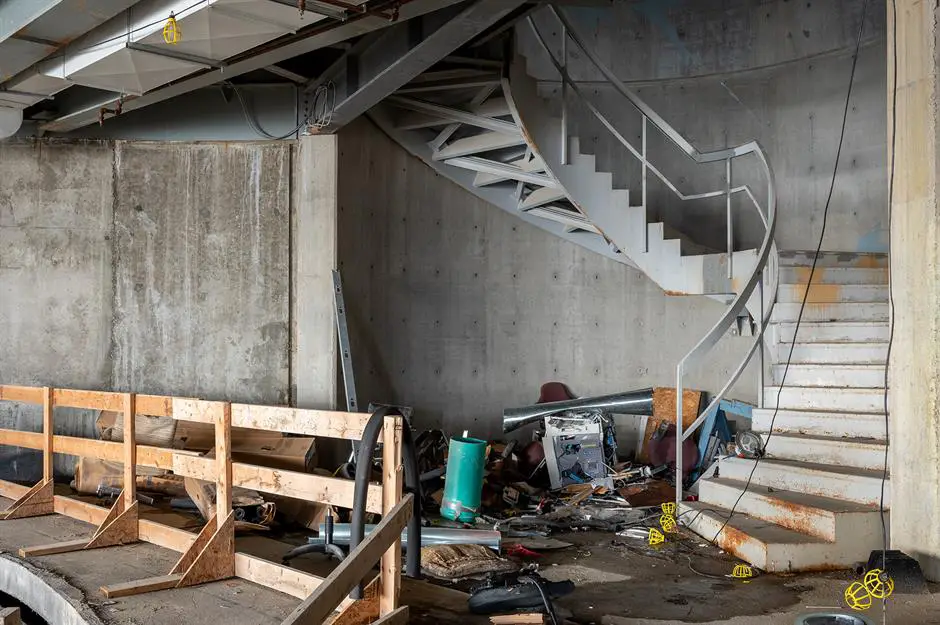
This mansion, the ultimate fixer-upper, calls for attention in every corner. Towards the rear of the pool area stands a spiral staircase. The Peter Grant Mansion was poised to become a masterpiece, but instead, it now stands as a concrete shell yearning for a substantial financial infusion to realize the architect’s vision and transform it into a luxurious lakeside residence.
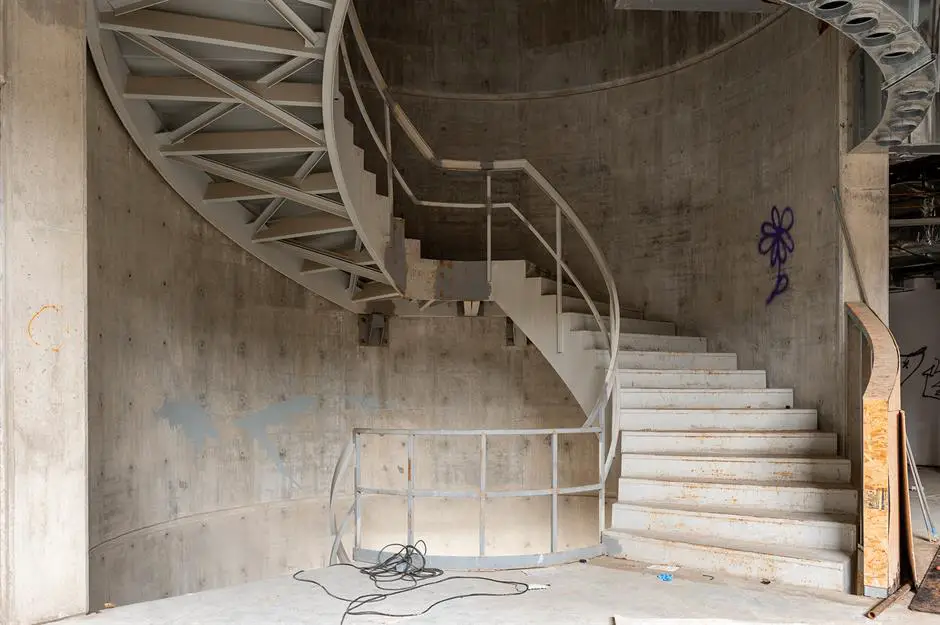
Climb the spiral staircase to the enigmatic first floor, and you’ll discover that the upper level is just as barren as the one below. The concrete walls bear the sole mark of a small graffiti symbol left by one of the many uninvited visitors who have roamed the property over the years.
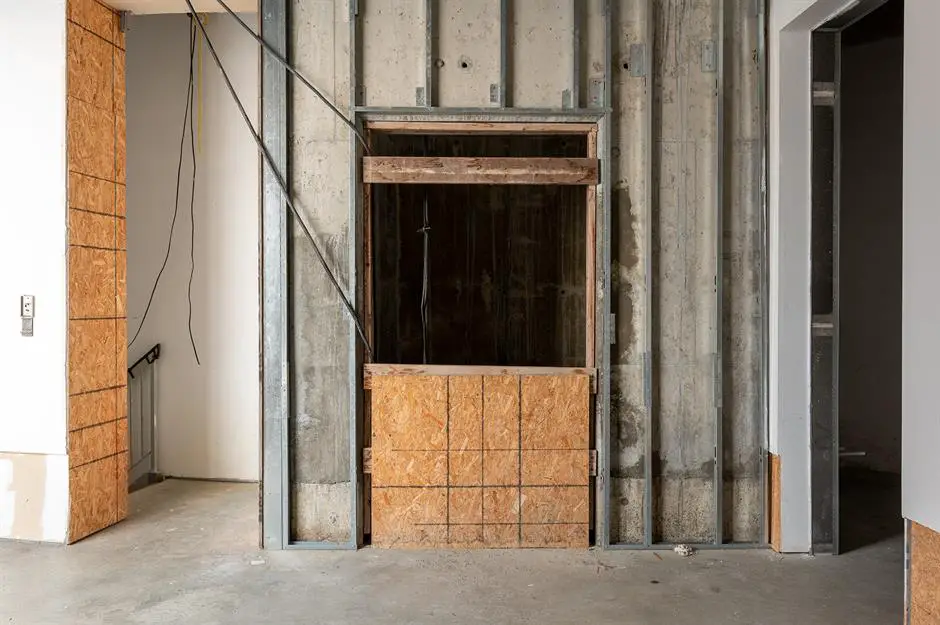
Accompanying the spiral staircase is an empty elevator shaft, hinting at an alternative means to access the far reaches of the sprawling mansion. However, with the elevator itself never having been installed before construction ceased, all that remains is a plywood box surrounded by unfinished walls, serving more as a hazard than an asset.
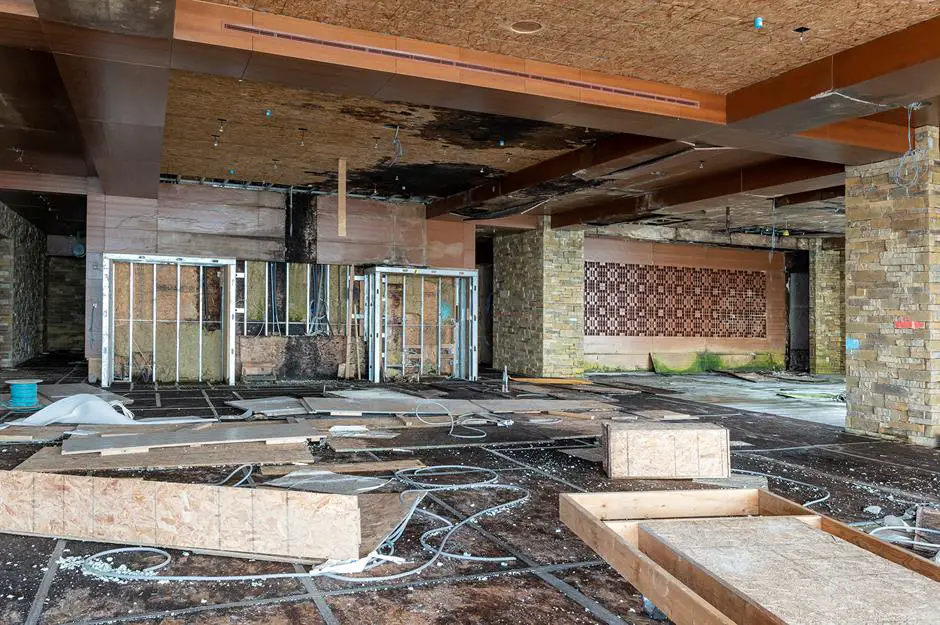
Recommended: Al Capone’s Cell… These Photos Of The Abandoned Eastern State Penitentiary Will Spook You Out…
As it appears, the contractors seemingly departed in haste, leaving behind remnants of building materials from bygone eras scattered throughout many of the rooms. This room, for the most part, stands as an empty shell, with only the exquisite wood paneling on the back wall offering a glimpse of the intended vision for this abandoned space.
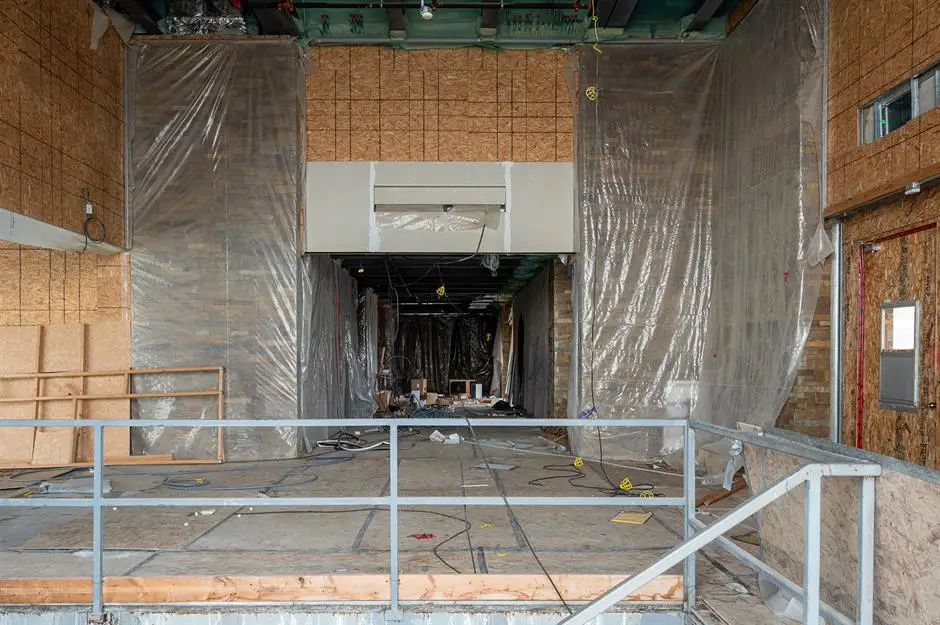
The upper floor is even more devoid of substance than the lower level. This vast atrium boasts towering ceilings and is bathed in natural light from the expansive windows. However, the walls are yet to be erected, leaving one to wonder about the material that would have been employed.
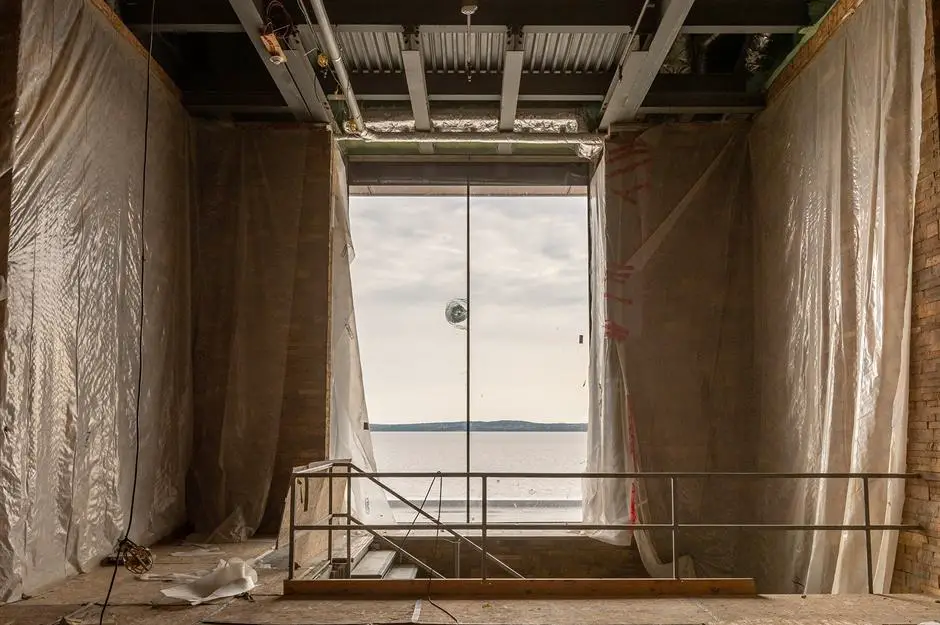
This hallway was set to become a central focal point of the home, but now, cloaked in plastic sheeting and with a bare staircase, it exudes no sense of opulence. Moreover, the window has sustained damage, further increasing the cost of repairing and completing the home, already estimated to be upwards of CAD$1 million ($800k/£589k).
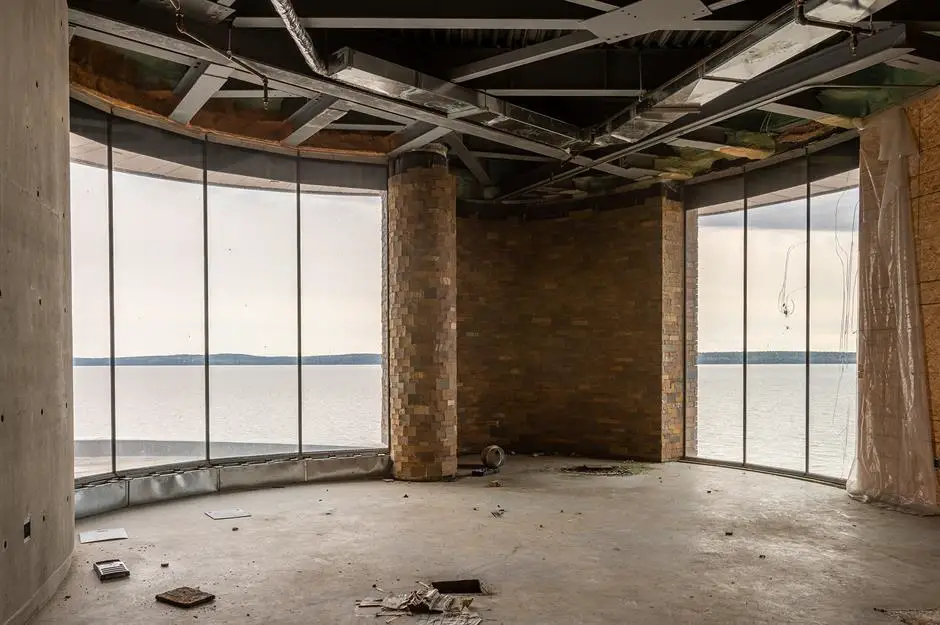
The upper level still manages to offer resilient visitors some breathtaking panoramic views. It’s a serene refuge amidst the disarray and decay, a space that would have undoubtedly left Grant’s guests in awe.
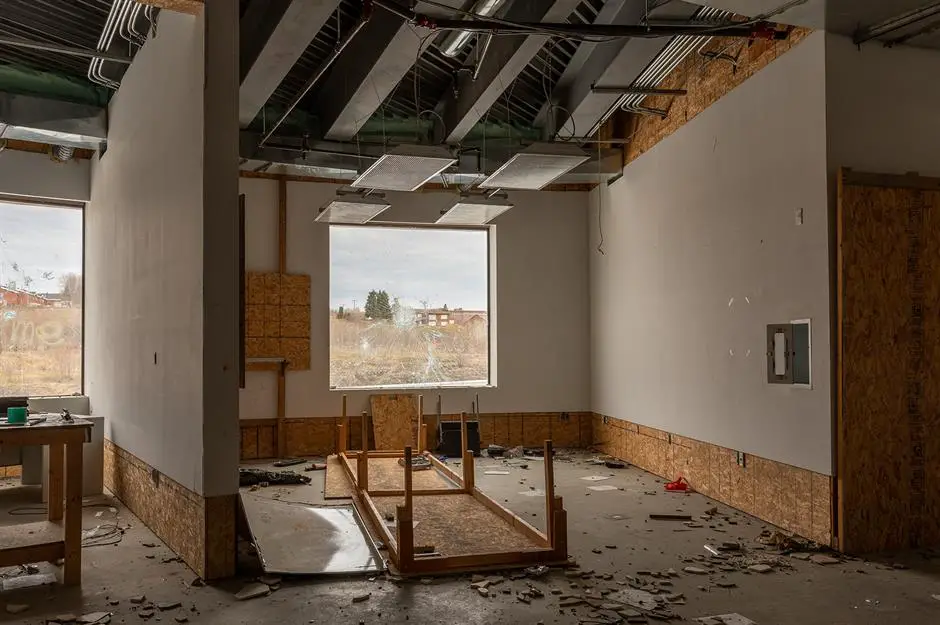
However, as you progress further along the corridor, the chaos and mess resume. This small room is speckled with dirt and debris left behind by the departed workers. On the opposite side of the wall, a rare trace of life is discernible: a small green mug perched atop an upturned table.
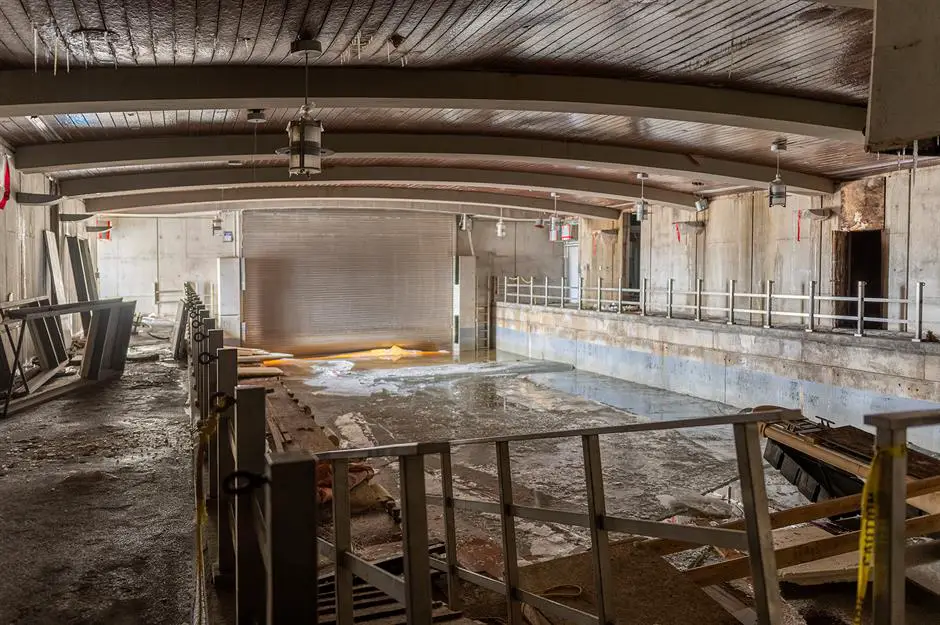
Initially conceived as a playground for the super-rich, this home ultimately became a partly-finished relic of ambition. The sprawling mansion was intended to include a substantial boat dock, but now, covered in ice, the area lies wasted and unusable.
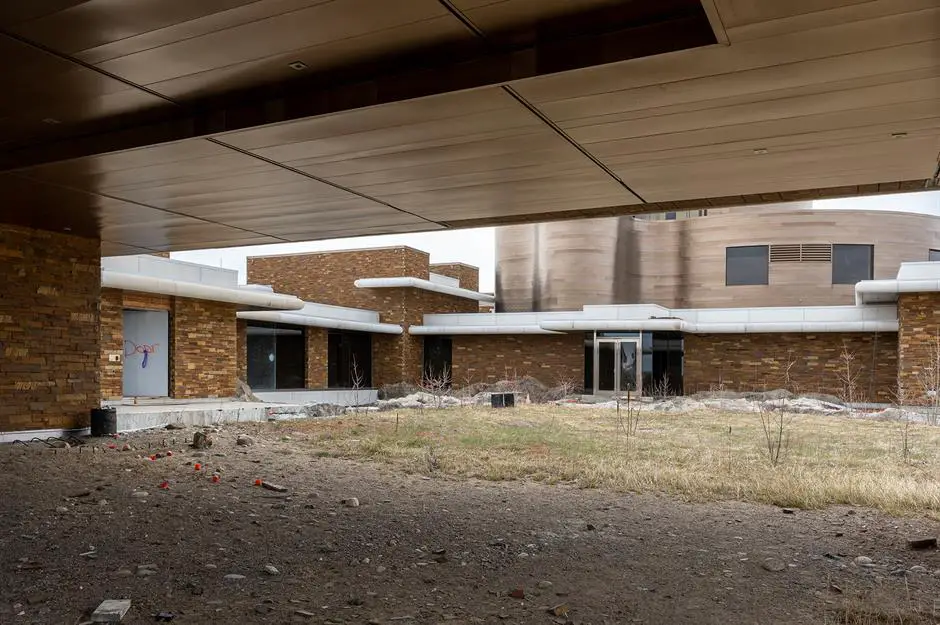
From the exterior, the consequences of neglect are readily apparent. The courtyard, now overrun with overgrown grass, has unquestionably seen better days. The door has been left slightly ajar, inviting anyone to enter the home.
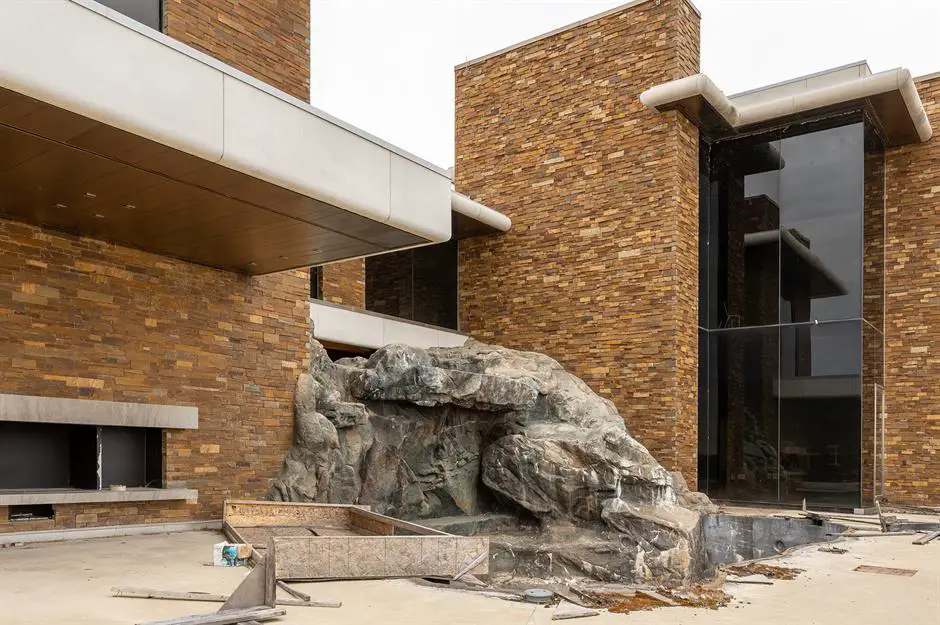
This was originally designed to be a flowing waterfall, but it has long since dried up. Deprived of the necessary electricity, the exterior area is but a shadow of its potential, left to deteriorate for years.
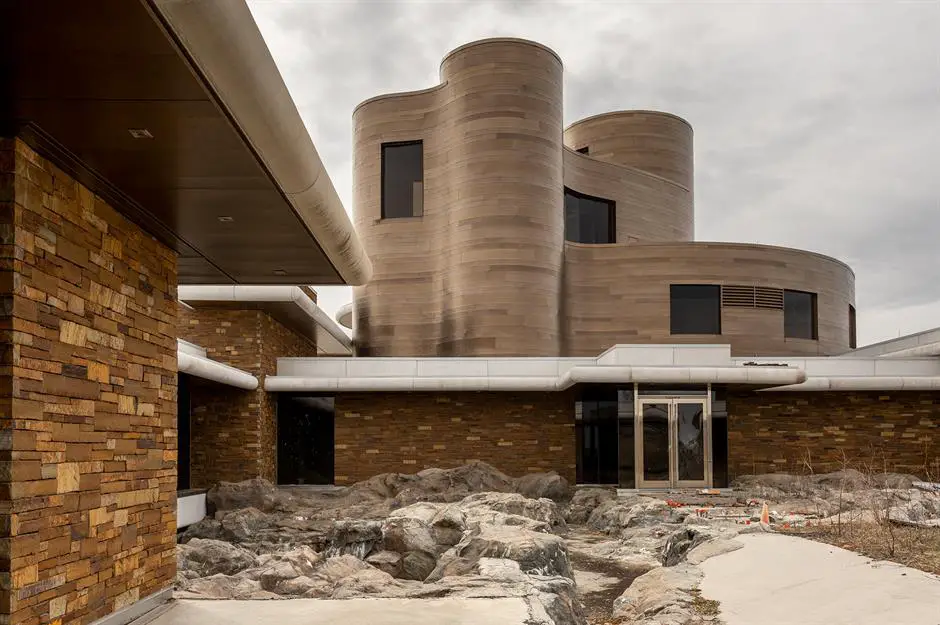
However, if you cast your gaze upward, the main building stands complete, adorned with wood cladding on the exterior, providing a glimpse of what one might expect inside. Even in its current state, the property exudes limitless potential. We can’t help but anticipate what the future holds for this ill-fated mansion.
Recommended: Abandoned F.W. Knox Villa Set to Be Restored in Coudersport, PA (PHOTOS)